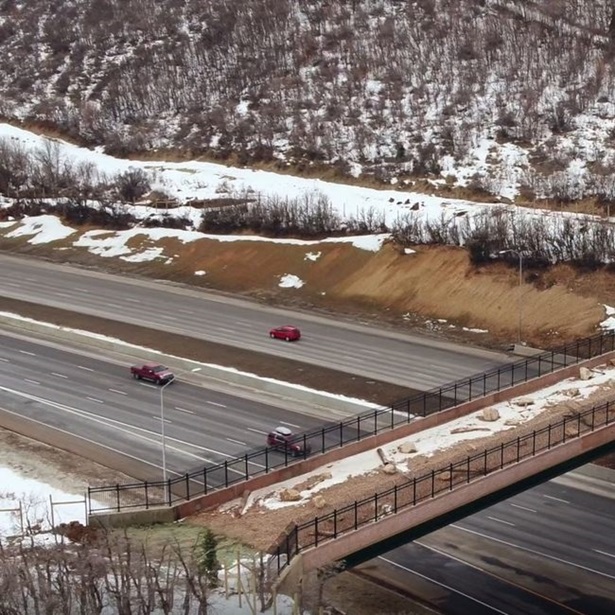Utah Commits to Building More Wildlife Crossings to Improve Driver and Animal Safety
But multiyear funding is needed—throughout the West—to sustain momentum of this critical infrastructure

When the Utah Legislature last March approved $20 million to construct new highway crossings for wildlife, state policymakers continued their long and impressive history of investments in this vital infrastructure. Numerous studies throughout the West show that over- and underpasses designed specifically for animals reduce wildlife-vehicle collisions while restoring the migration patterns of deer, elk, and other species.
However, to lock in long-term improvements in driver safety while conserving Utah’s ecologically—and economically—valuable wildlife, state lawmakers should look beyond single-year appropriations. With scientific knowledge and public support regarding wildlife crossings at an all-time high, now is an opportune time to consider dedicated year-over-year funding that can both provide certainty for project planning and implementation and better leverage federal programs that can build on Utah’s commitment to safe roads and healthy wildlife.
Wildlife crossings play a crucial role in maintaining ecological connectivity between natural areas, which in turn enhances the resilience of wildlife habitat in the face of climate change. Despite the benefits of these structures, states lack sustained funding to support their construction. Instead, they are commonly funded as part of large transportation improvement projects, or through one-off, multisource funding allocations that may or may not fulfill the need at hand.
In addition to Utah, state legislatures in Nevada, Colorado, New Mexico, and elsewhere have begun to provide dedicated, one-time appropriations for the construction of wildlife crossing structures. Western states dedicated more money for crossings in 2023 than they did in 2022, and likewise 2022 saw more than in 2021. One of the drivers for this trend is states’ interest in attracting federal funds from the new Wildlife Crossings Pilot Program, which made available $350 million to states to address planning, design, and construction of wildlife road crossing infrastructure. The first round of grants under this program will be announced this fall, and Utah submitted several applications using its new state funds as a match.
Although the state funding trend is positive, such annual appropriations are inconsistent and unreliable from year to year. Further, they run counter to the multiyear planning, design, and construction cycles of wildlife crossings, which benefit from predictable funding. The Pew Charitable Trusts and our partners are working with Utah lawmakers from both parties to build on the success of 2023 by securing a reoccurring funding commitment from the Legislature and thereby enhancing the state’s ability to build wildlife crossings in an expedited manner year in and year out.
And the pipeline for future wildlife crossings is filling up. As Utah’s population grows, the Utah Division of Wildlife Resources’ Wildlife Migration Initiative continues to map the movements of wildlife to identify the best places to site new crossing structures. Although the $20 million appropriated last legislative session will address a specific hot spot near the junction of interstates 80 and 25, Utah’s Department of Natural Resources data shows dozens more hot spots where frequent wildlife-vehicle collisions, habitat connectivity concerns, or both need attention.
Utah made history in 1975 when it completed the first wildlife overpass in the U.S. on Interstate 15 near the town of Beaver. The $20 million dedicated to wildlife crossings in 2023 stands as the largest dedicated appropriation to date outside of California. Now, Utah has the opportunity to lead on wildlife conservation and driver safety once more by passing legislation that provides a reoccurring funding source for the construction of new wildlife crossings. Pew looks forward to the February start of Utah’s 2024 legislative session as we work with lawmakers and stakeholders to secure a bright future for Utah’s wildlife and motorists alike.
Nic Callero works on The Pew Charitable Trusts’ U.S. conservation project.










